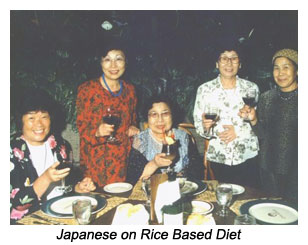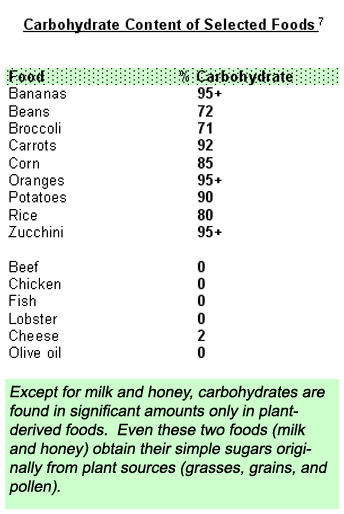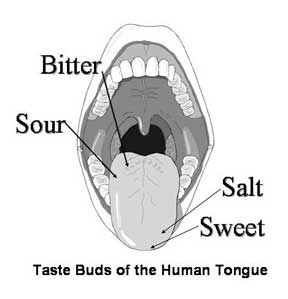|
|
|||||||
|
|||||||
|
Subscribe to this newsletter at www.drmcdougall.com |
|
||||||
|
People – Not Their Words – Tell “The Carbohydrate Story” Has the world gone mad condemning carbohydrates? * Over half the US population is either on a low-carb diet, has tried a low-carb diet, or plans to try a low-carb diet in the future according to one recent report.1 Does this mean carbohydrates have now been proven harmful to our health and waistline? * Should the fact that almost every sector of the food industry, from Heinz Ketchup to Michelob Beer, has jumped on the low-carb bandwagon cause us to start shopping in the Atkins-friendly aisles? * Does the claim by TGIF Friday’s restaurants that a Sizzling NY Strip (steak) covered with Bleu Cheese and a Bunless Burger (two meat patties covered with cheese), “not only helps you lose weight, but reduces risk factors associated with serious diseases, including diabetes and cardiovascular disease,” 2 cause us to now think that everything we once learned about nutritious eating must have been wrong? * Now that W. Atlee Burpee & Co., the seed seller, ranks their veggies according to carbohydrate content in order to help us choose the seeds to plant to grow “low-carb” plants in this year’s garden, should we question the very wisdom of Nature’s design? Maybe plants should have been made low-carb in the first place by our Creator? With so much contrary information coming from every direction people doubt their own sanity and everything they once knew to be true about good eating. But by taking a moment to make a few simple observations about people you will know the truth First Observation: Worldwide, Trim People Eat Carbohydrates
If I hand you a globe of the Earth and ask you to identify for me the populations of people who looked the healthiest and trimmest, whom will you name? Immediately, Asians (Japanese, Chinese, Koreans, Thai, Filipinos, etc.) stand out. And what do they eat? Mostly rice! – with some vegetables too, but little meat and no dairy products. Not only are they trim for a lifetime, but they have a healthy and youthful look. When you get to know them better you will discover they have extremely low rates of diabetes, obesity, arthritis, multiple sclerosis, heart disease and cancers of the breast, prostate, and colon. Rice has been cultivated by the Japanese for over 2000 years as their principle crop. The fundamental importance of rice to the Japanese people is reflected by the facts that rice was once used as a currency, and that the formal Japanese word for cooked rice (gohan) has also the general meaning of “meal.” The literal meaning of breakfast (asa gohan), for example, is “morning rice.” In China the word for rice is also the word for food. The Chinese say “A meal without rice is like a beautiful woman with only one eye.” Instead of saying the typical greeting “How are you?” the Chinese ask “Have you had your rice today?” In India, rice is the first food a new bride offers her husband. In Indonesia, no girl can be considered for marriage until she can skillfully prepare rice.
Similar observations correlating high carbohydrate consumption with good health can be made for people living in rural Mexico on corn and beans, Africa on millet and beans, Peru on potatoes, New Guinea on sweet potatoes, and in the Middle East on chickpeas and rice. Confirmation of the importance of carbohydrate is found when people reduce their consumption by migrating to a Western nation, like the USA or the countries of Europe. As they eat less carbohydrate, and more fat and protein, they become fatter and sicker. Similar changes in health are seen within nations, like Japan, as the people become wealthy from industrialization and change to “American” foods.
Scientific documentation of these simple observations was recently reported in a four-nation study from Northwestern University of more than 4,000 men and women ages 40 to 59.3 Researchers found the thinnest people on Earth eat the most carbohydrates, and the people who eat the most protein were found to be the heaviest. There are no exceptions: consumption of foods naturally high in carbohydrate means a trim, healthy appearance. Second Observation: Athletes Fueled by Carbohydrates Win All knowledgeable
scientists agree that for winning performance during prolonged exercise
the best fuel for the body is carbohydrate.4-6 In practical
terms, this means eating starches (rice, corn, potatoes, beans, pasta,
bread, etc.), vegetables, and fruits – all of these plant foods contain
from 70% to 95+% of their calories as carbohydrate. Unbeatable athletes
shun foods devoid of meaningful amounts of carbohydrate – these are
meat, poultry, fish, eggs, cheeses, and vegetable oils. No endurance
athlete would ever consider competing while following a low-carb diet.
The Southwestern Indians Live and Die by Carbohydrates The Tarahumara Indians living in the Sierra Madre Occidental region of northwestern Mexico are an example of the high level of activity an entire population of people can enjoy on high-carb foods.8 These people are known worldwide as "the running Indians," because their entire culture is based around sprinting from one place to the next, and they have been known to travel between 50 and 80 miles every day at a race-like pace. Their diet is practically meatless, consisting of 90% corn, pinto beans (chili), and vegetables (like squash).9 This energetic population is free of diabetes, obesity, and heart disease.10 However, their genetic relatives, the Pima Indians, reside in Gila River Indian Community in Arizona. These Indians gave up their high-carbohydrate diet over 75 years ago in favor of the high-fat, high-protein, and high-cholesterol American diet. Now, over 80% of these people who are over 55 years of age suffer from type-2 diabetes and obesity; and heart disease and kidney failure are epidemic.10,11 Needless to say, running is not a part of their daily doings, in part because of the all-too-common amputations of gangrenous legs and feet because of their diabetes. Incapacitation of the Canadian
Soldier by Lo-Carb Food If carbohydrate is the fuel for peak performance, then why would you choose less for yourself at any time? Third Observation: Human Needs Are Uniquely Satisfied by Carbohydrates Notice the tip of your tongue enjoys sweet-tasting foods – the sugars found in starches, vegetables, and fruits. This is not a mistake in the human blueprint. You are designed to be a seeker of sugar. The tongue has taste buds that respond pleasurably for only one kind of calorie-giving substance – carbohydrate. The food industry knows this and that is why they dump over 150 pounds of sugar into your foods each year – to make you want to buy them.
There are no taste buds for the other two possible sources of calories: fat or protein. If protein-based (low-carbohydrate) foods, like meat, were important for people, then we would have sensors for amino acids on the tip of our tongues like those on the tongues of true carnivores – cats, for example.14 Carbohydrates are the preferred source of energy for our tissues and all of the cells in our bodies can use carbohydrate for energy. The carbohydrate glucose is essential for the brain (about 140 grams a day are utilized). However, under unusual circumstances, such as when someone is starving to death or following a low-carb diet for long periods, the brain can adapt to burn ketones. Not surprisingly, brain function in people has been found to be impaired when the brain burns ketones rather than glucose.15 There is also concern that long-term adherence to a low-carb (ketone-producing) diet may cause permanent damage to the developing brain.16 (During strict avoidance of carbohydrates the body turns to fat for fuel. A byproduct of fat-burning is ketones.) We typically store two pounds of carbohydrate in our muscles and liver as glycogen (this is branched chains of sugars). These reserves are immediately available to supply the brain and other carbohydrate-dependent tissues during long periods between meals. They also serve to provide a steady supply of fuel for the athlete during endurance events. Some tissues of our body, such as red blood cells and kidney cells (glomeruli cells) will only burn carbohydrate. If insufficient amounts are consumed, and after our glycogen stores are depleted, our bodies will synthesize carbohydrate from protein. This process of turning protein into glucose is called gluconeogenesis and is an undeniable testament to the vital importance for carbohydrates. Fourth Observation: Carbohydrate Foods Are Complete Human Foods As we pleasure our taste buds by eating whole (unprocessed) carbohydrate-rich foods (starches, vegetables and fruits), we take in all our other necessary nutrients at the same time. Plant foods, by no coincidence, contain just the right amount of essential carbohydrate, dietary fiber, and minerals to meet our needs. Plants synthesize eleven of the thirteen known vitamins, and all of our essential fats and essential amino acids (proteins). (The other two vitamins are Vitamin B12, which comes from bacteria, and Vitamin D, which is actually a hormone made by the action of sunlight on the skin.) The Potato: Complete Nutrition in a Spud If I were given the choice of picking only one food to live on for the rest of my life, I would choose potatoes. After all, potatoes have provided complete nutrition for children and adults throughout history under many circumstances. For example, rural populations of Poland and Russia at the turn of the 19th century lived in very good health doing extremely hard work with the white potato serving as their primary source of nutrition. In 1925 a landmark experiment was carried out on two healthy adults – a man 25 years old and a woman 28 years old.17 They lived on a diet primarily of white potatoes for 6 months.7 Upon conclusion of the experiment the researchers reported, “They (the man and woman) did not tire of the uniform potato diet and there was no craving for change.” Even though they were both physically active (especially the man) they were described as, “…in good health on a diet in which the nitrogen (protein) was practically solely derived from the potato.” Fifth Observation: Low-carb Diets Make People Sick (and Maybe Fat) Look at your friends and relatives who are on low-carb diets. My observation is they look like the Canadian soldiers on pemmican rations – they are listless, dehydrated, with drawn faces and sunken eyes, and their breath smells of acetone (ketosis). Watch them long enough and you will notice their weight loss is only temporary – few people can remain that sick for very long. Anyone considering a low-carb diet should be struck by the poor nutrition that these foods provide. Red meat, poultry, fish, shellfish, eggs, and vegetable oils contain no carbohydrates, and only 2% of the calories from cheese are of this essential nutrient. These low-carb foods contain neither dietary fiber nor vitamin C.7 Meat contains no calcium and dairy products contain essentially no iron. What should really cause you to pause is what these low-carb, animal foods, do contain – generous and harmful amounts of cholesterol, saturated fat, animal protein, microbes (viruses, bacteria, etc.) and environmental chemicals. The negative impact upon health can range from annoying to catastrophic. In the short-term, “low-carb malnutrition” causes constipation, aggravation of hemorrhoids, fatigue, dehydration, acidosis, loss of appetite, and nausea. Over the long haul, a diet heavy in these foods will increase a person’s risks of heart disease, stroke, cancer, kidney failure, kidney stones, and osteoporosis, to name a few dreaded, but common, diseases. Low-carbohydrate diets have dominated bookstore shelves since 1990 and look what has happened to people’s weight over the last 15 years. In 1991, 12% of the population of the US was obese; by 1998 18% of people reached this super-size,18 and now reports say as many as 26 to 30%% are corpulent. Enthusiasm for low-carb eating is directly tied to increasing rates of obesity – the more people blame carbohydrates for their troubles the fatter they grow – and now two-thirds of people in Western countries, like the USA, are sufficiently overweight to be a threat to their health.
Abraham Lincoln said, “You can fool some of the people all of the time, and all of the people some of the time, but you cannot fool all of the people all of the time.” I say, “You can’t fool anyone who has his eyes wide open.” No matter how much people, in love with bacon and eggs, may wish it were otherwise, there are no meaningful arguments to counter these five observations that I have asked you to make. And there is much more. Libraries are filled with scientific research showing a diet based on high-carbohydrate plant-foods supports human health and a diet based on low-carb animal foods causes serious harm. In subsequent newsletters I will discuss some of that science.
References: 1)
http://www.just-food.com/news_detail.asp?art=57042 |
|||||||
|
|||||||








 The
Truth about Good Nutrition Is Obvious
The
Truth about Good Nutrition Is Obvious